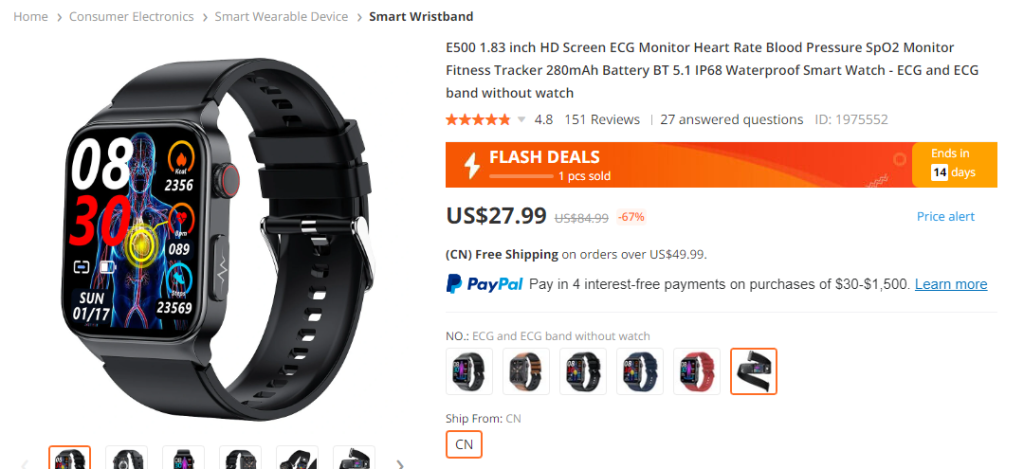People who have read my blogs over the last few decades know that I keep to direct evidence; I avoid speculation and “I figure things work this way” thinking. Microbiome tests is a key part of it. My preference is to get as much data as is affordable/reasonable. This is typically my Bacteria Reported/Cost ratio. At the moment, Thorne is the distinctive winner.
Another data source can be smart watches. I have written about this in the past, Monitoring watch for CFS and other Conditions [2021]. After two years, my watch suffered failure on the charging toggle; so time to get a new one — what I got is described below. Every year features increases on smart watches. My first watch took only a few measurements and only on the hour.
Not Prestige Watches
I could go Apple Watch ($400), Fitbit ($300), Samsung ($450) etc. and drop a few hundred dollars for a device that will likely be technologically obsolete in 2 years. Or go with a Chinese model that costs $40 and which will last 2 years or more. In many cases, the key sensors may be the same as used in the prestige models. In some cases, these Chinese watches have features not available on the prestige watches.
Accuracy/Medical Grade is NOT the purpose
I use the watch to detect differences. In general, I find the results are reasonably accurate when I compare to standalone devices.
For most people (especially those with brain fog), their memory is poor and often they do not feel there was any change based on subjective memory. Having daily history going back months allows you to get objective measurements of things that change. Hopefully, it will stop you from ceasing something that is actually helping. Remember, I am very objective evidence based.
Review of my latest watch
You can find them on Temu or Banggoods. My model is E500. Once I got mine, my wife wanted to upgrade to the same model and did.

The screens
How many steps today and hours of sleep with details below

Then Heart Rate, BP and ECG (manually done)


Some Drill Down Details

Sleep Quality is often influenced by the Microbiome
Having daily detail breakdown is sweet!

The heart rate also maps activities (such as steps) providing better understanding!

With a good summary

Blood Pressure is every 5 minutes. With the other data, if there is a spike, you have enough other measurement to evaluate the events and causes.

Oxygen Measurement is far better than a finger device!

And more details

HRV – Heart Rate Variability

With simple summary and ratings

Below is an example from a day that I was pushing myself for physical activity more than usual (some who use the term “out of shape”). Fatigue was definitely happening!

Night Sweats
At present, I do have night sweats — the temperature monitor definitely show it. They start about 3 hours after going to bed and stops when I wake. As is common for people with ME/CFS (including those that are recovered), I have below normal temperatures.

Blood Glucose Levels
This can be very good to determine how well your meals are handled by your body

Bottom Line — Concrete, Detailed Objective Data!
There is a little overhead. I usually do periodic screen captures on my phone and off load the images to my PC so I can compare what was to what is.
How does it measure blood pressure , is there a seperate cuff ?
It uses lights at special frequency. See https://www.whatsthebest.co.uk/tech/smart-tech/how-accurately-can-a-smartwatch-measure-blood-pressure/